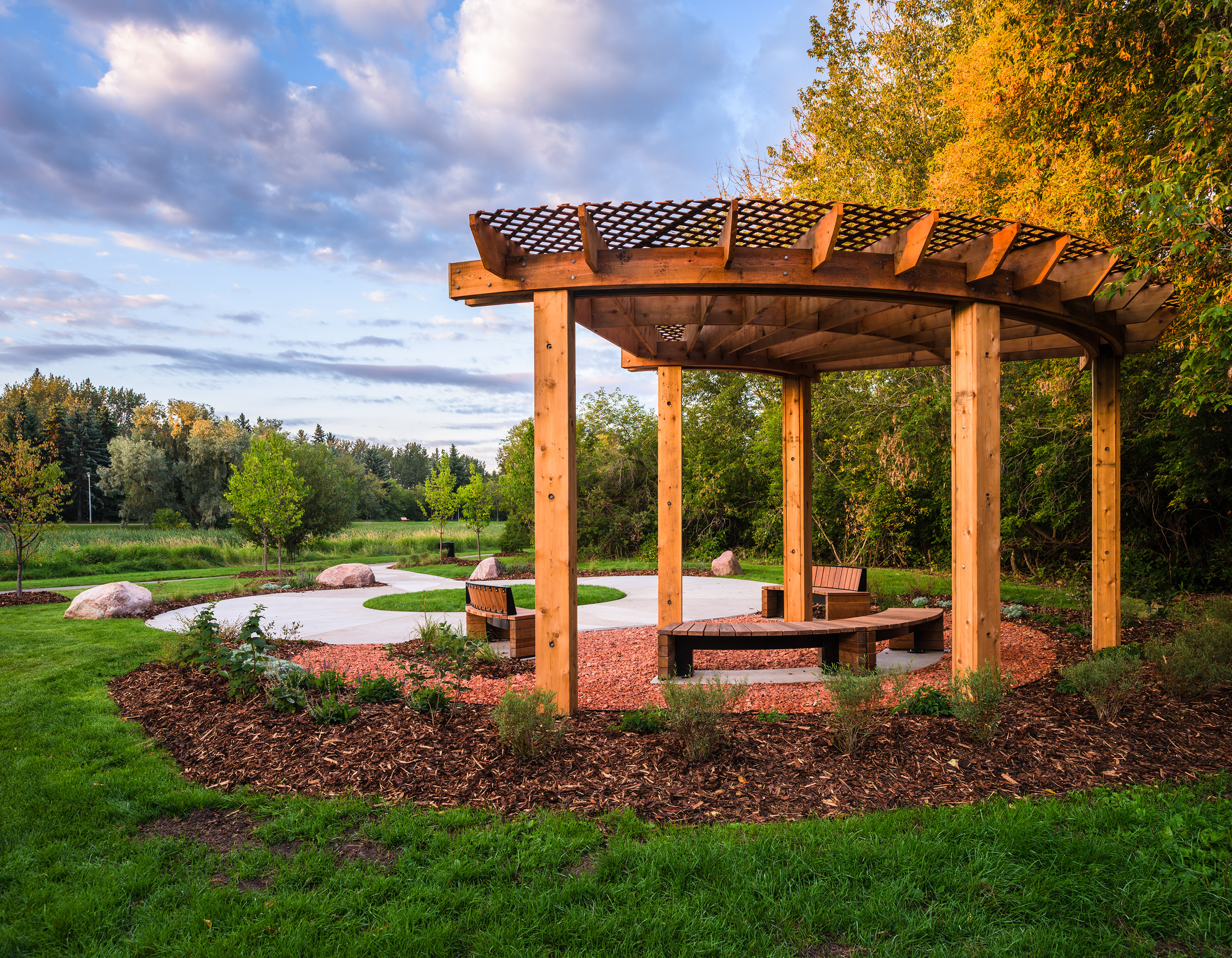
9.3 Payhonin Reconciliation
Principle
Support reconciliation and increase residents’ awareness of the rich Indigenous history and culture in the St. Albert area.
Photo: Marc Chalifoux
Payhonin Reconciliation St. Albert is a City initiative that supports our ongoing journey towards reconciliation. St. Albert is located on the traditional territory of many Indigenous groups, is the homeland of the Métis people of Alberta, and is located within Treaty 6 territory. The First Nations and Métis history of the St. Albert area has often been overlooked when telling the story of the city’s development and when making land-use decisions. The policies below support the Truth and Reconciliation Commission’s calls to action by engaging Indigenous communities in meaningful ways and advancing the community’s reconciliation journey with Indigenous peoples.
What does Payhonin mean?
Payhonin is a Cree word for gathering place and is a traditional Indigenous description of the valley where St. Albert is located. Many stories passed down through the Nehiyaw people describe numerous places at certain lakes and along the Sturgeon River valley as places of Payhonin to rest, camp or use as navigable coordinates in their travels.
Policies
9.3.1.
Identify opportunities to contribute to reconciliation efforts through City and land use policies, processes, and decisions.
9.3.2.
Acknowledge and promote Indigenous culture within the context of the history of the city and Treaty 6 territory.
9.3.3.
Incorporate Indigenous place names and cultural and historic interpretive elements in new development and redevelopment and actively involve Métis and First Nations communities in the process.
9.3.4.
Recognize and celebrate traditional and contemporary Indigenous art and culture in the community.
- - - - -
Previous:
Heritage Conservation
- - - - -
Next:
Public Art
Related Pages
Last edited: July 12, 2021

